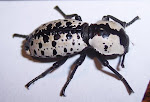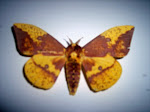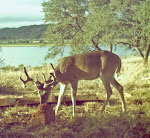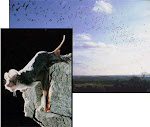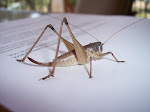Issue 2- July 6, 2009 Osprey
The last thing my buddy Paula said to me yesterday was “Did you finish the next issue of ‘Our Creatures, Great and Small’ yet? She will probably ask the same thing when we talk later this morning. Maybe by that time I’ll be able to give her a different answer.
It’s about five thirty and still dark outside, but the coffee is on. It’s not ready yet, but it’s sure starting to smell good. I’m a patient guy so I’ll just sit here and wait for the day to start and the coffee to brew. In the meantime, I’ve got my laptop out and I’ll just sit here at the breakfast table on the side facing the windows. I know Canyon Lake is a hundred yards down there in the dark because I’ve watched it through these same windows for over a year now, ever since Pat and I moved to Mystic Shores. Actually, my back windows overlook the Guadalupe River and the lake proper begins a little downstream to the east, near Marty and Barbara’s. Never-the-less, the fishing is good just below the house, with lots of structure like trees sticking up now that the water level is so low. The lights on the porches of the homes a mile across the west bay of the lake are starting to wash out, just like the stars did a few minutes ago. It is early yet, but starting to get light now, even though the sun hasn’t cleared the live oak ridge to the east. If I stepped out on the porch, I’m sure that I could hear the birds chirping and welcoming another day.
The light is coming up faster now and you can just start to see the mist streaming off the water around the stumps on this side of the old river channel. I bet I could see it better if I had some coffee in me. Anyway, that mist will burn off pretty quick once the sun gets up. It always does here in the Hill Country of Texas. Must be the low humidity. I hope the sea-hawks, the Ospreys, decide to hunt from the big Cypress snag on my side of the river this morning. I have a clear view of it from this window and my binoculars are sitting right there on the window sill. I just have to be patient, because they are diurnal hunters and won’t show up until it’s pretty light out. I don’t have real high hopes, however. They haven’t been using that snag all that much since the water level has dropped and the shoreline has moved out thirty yards. There is probably a better vantage point up river now where their hunting perch is closer to the action. Last summer they were here almost every day, and it’s great fun to watch them hover like delicate eagles in their search for a fish for breakfast.
As you can see, I’m a morning person and I’m a nature person. It is not so obvious that I’m also a little selfish, but I’m trying to work on that. I’m selfish because I’ve been keeping these Ospreys as my own private little secret for about a year now. (They have been great therapy, I can assure you, and I needed some after the presidential election and the Wall St mess.) Anyway, I don’t think too many people in our neighborhood know about them. Some of the fishermen probably do. Certainly nobody else watches them as much as I do. So, what is the big deal and what is there to share? I’ll let you know as soon as I drink this coffee…..
OK, the coffee now has a stronghold. These Ospreys are just too cool! Mother Nature did an extraordinary job on this critter. They are beautiful, graceful, functional and deadly. Look at this photo……. How majestic is that? They have a wingspread of almost six feet and a body about two feet long. The white chest and head are in distinct contrast to the black wings and black eye patch. They look like they mean business, and their business is catching fish.
(Kingdom; Animalia, Phylum; Chordata, Class; Aves, Order; Accipitriformes, Family; Pandionidae, Genus: Pandion, Species: P.Haliaetus)
These raptors have an array of features, some unique to their genus, that make them super efficient at catching fish. Allow me to go into some detail.
Their eyesight is extraordinary compared to ours. They can distinguish objects ten times better and farther away than we can. No wonder they can see a fish a foot under the surface of the lake while flying fifty feet above the surface.
Ospreys are one of the few birds that will actually go into the water to grab a fish. Eagles, for example, only skim the surface and grab a fish as they fly over. Ospreys actually go feet first into the water and can go in three feet deep after their prey. (They have closable nostrils to keep out water during these dives.) They often target fish in the 12-14 inch range.
Their talons are adapted just for fishing. They have backward facing scales that act like barbs and help them hold onto the fish. Reversible outer toes give them an optimum grip and allow them to rotate their prey headfirst so there is less drag and it is easier for them to fly away. I’ve seen this a couple of times on our river and it is fascinating to watch. Keep in mind that these birds, although large and powerful, only weigh about four pounds. It takes quite an effort for them to get airborne with a large fish and the way they spin them around and face them forward to make them more aerodynamic is fascinating.
The Ospreys are easy to distinguish from other large birds around the lake. They can hover, which they often do before they begin their dive after prey. Their wings are long and angular and they leave their talons down when they fly, giving them, in my opinion a little bit of a ‘gull’ look.
Their tail is short and the four long ‘finger’ feathers at the end of their wings are distinctive.
Their call is a series of sharp whistles.
Here in our area, we are far enough south that some may stay year round, but normally they migrate to South America during the winter.
Ospreys are great at raising a family. In the spring, they make massive nests out of sticks (often six feet in diameter) and will return to the same nest and rebuild it year after year. (There is a nest about four hundred yards south of Doug and Lisa’s home on the other side of the river.)
The females lay two to four eggs along about April and they hatch after five weeks. The parents share the feeding duties. The Osprey male and female mate for life (a good thing in my opinion) and often live to twenty or twenty five years of age.
They have few natural enemies. An occasional chick is probably taken by owls but other than that, they are near the top of the food chain.
Ospreys are not endangered and are pretty widespread throughout our country and indeed the world. The species can be found on all continents except Antartica. Back in the fifties they were quite subject to the DDT that was used at the time as a pesticide. It made the shells of their eggs weak and the mortality was extremely high. However, their numbers have recovered and this magnificent bird is not in any danger of extinction. There are just four subspecies worldwide and of course our local version is the biggest and best. It has to be……. it is Texan, you know.
Well, the Ospreys haven’t shown up yet this morning and there are other things to do today. To wrap up this issue of “Our Creatures, Great and Small” keep in mind that we are the stewards of our wildlife here in Mystic Shores. That means we are also responsible for sharing and perpetuating this heritage. What’s it worth to show these magnificent birds to the next generation?
Clay
Click on these pictures to go directly to the article.
Followers
Blog Archive
About Me

- Clay Crum
- I'm always looking for suggestions (or photos) about other Mystic Shore wildlife. Do you know where a rattlesnake den is located? Do you have pictures of a mountain lion taken locally? Have you had interesting encounters with our wildlife? Share them with me by sending me an email or commenting on this blog.
